The Rebel Virgins and Desert Mothers Who Have Been Written Out of Christianity’s Early History
The rebels of early Christianity, like Melania, Paula, Susan and that guy Jerome. (All Illustrations: Matt Lubchansky)
I. From Silk Robes to Hairshirts
When Jerome, the Catholic priest and scholar, arrived in Rome in the middle of the fourth century, he discovered a circle of noblewomen living in elaborate homes on the Aventine Hill who were nothing like their neighbors.
They’d given up their silk clothes and pearl earrings, the hairstyles and rouge and musk, even bathing, as signs of vanity, and were now wearing coarse robes made of goat’s hair. They stayed almost entirely in their houses, fasting and praying, discussing Scripture; in secret, they might visit a nearby basilica or martyr’s tomb. They never allowed themselves to rest on couches or cushions of any kind, and at night they slept on thin mats on the floor—though they hardly slept, spending those hours, instead, crying and praying. Most importantly, these women—some of them widows, some only recently of marrying age, all converts to Christianity—had each taken a vow of chastity.
Their ringleader was Marcella, a famous beauty, now a widow, who lived with her mother. No one was sure where she’d gotten the idea for this improvised monastic network, but when her husband died only months after her marriage, Marcella embraced a life that few of her class would ever understand.
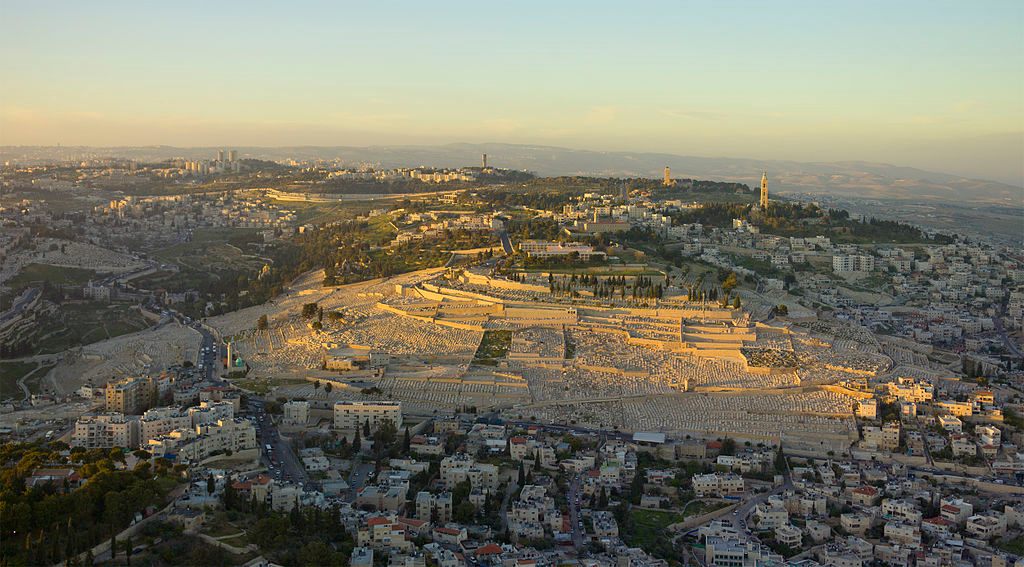
The Mount of Olives in Jerusalem, where Melania established two monastic communities. (Photo: Godot13 /WikiCommons CC BY-SA 3.0)
Many of the female leaders of Christianity—in the Catholic Church in particular, with its 1.25 billion followers around the world—are barred from being fully ordained and are closely overseen by men. But this was not always the case. Scores of early Christian women—like Marcella, the desert-dwelling Susan, or the scholars Melania and Paula—embraced radical lives, helping the young religion fan out across the Roman Empire and beyond.
From the beginning, the followers of Jesus of Nazareth comprised a movement that was extreme, countercultural—a revolution that embraced both men and women, even social outcasts and slaves. In those first centuries, while the religion was still defining itself as an institution, many devout women flouted cultural convention and chose Jesus himself—not bishops and bureaucrats—as their personal guide. These women had permission to live beyond their gender as the leaders and patrons of local congregations, as preachers and ecstatic prophets and tough ascetics. They defied Roman family laws and rejected their sexuality. They walked the streets, spreading the gospel. They taught themselves Hebrew, analyzed Scripture, corresponded with other Christian leaders. They were aristocrats who seized control of their money and funneled it into the movement, building monasteries and helping prisoners and the poor.
Christianity took shape with the support of these female leaders and mystics and activists. But what we have left of them now are only the remembrances of a handful of men.
II. Rebel Virgins
It started with the virgins.
In the first two centuries of Christianity, many of the cultures in which it took hold had stubborn gender roles—but these roles weren’t as hardline as you might think. Women had long been the managers of their households, and since followers of the new movement met in private, in intimate “house churches,” women often became the natural leaders of the congregation. Christian women and men alike could become full-fledged ministers.
In the apostle Paul’s letter to the early congregation he founded in Corinth, he suggested that women should not teach or even speak aloud in church—but in his letter to the Romans, he also name-checked 28 prominent leaders in the Roman Christian community, 10 of whom were women. (A woman, the minister Phoebe, was Paul’s entree into that community.) Eventually, in some areas, there were even female bishops. This was back when the church was still a social movement, not yet a political powerhouse, and women were drawn to the possibilities it cracked open for them—as preachers, prophets, and patrons.
That said, laws passed by Augustus just before the start of the Common Era still required all upper-class men to marry and all women to procreate, in a return to Roman family values that were largely political myth. Women could only become financially independent—or, simply, independent—if they’d been divorced or widowed or given birth to a minimum of three children. To escape this system, some upper-class women went so far as to register as prostitutes in order to have free rein with their own money.

Kellia, a fourth century Egyptian Christian monastic community in the Nitrian Desert. (Photo: Geo24/WikiCommons CC BY-SA 3.0)
It is in this environment that Christian women began to use the vow of chastity as both an act of devotion and an excellent legal loophole. Virginity became a movement, the ultimate hack. As a consecrated virgin, a woman suddenly became free of many of the empire’s gender laws, free to preach and to lead in their community, free to model themselves after the apostles. The majority of the virgins were women in the cities who formed their own network of house churches. They flaunted their independence from men, refusing to hide away or to veil themselves, rubbing their ethical superiority in married couples’ faces. They dressed to make a statement, sometimes adopting men’s clothing and hairstyles (some sheared their heads entirely), and preached in the streets in drag. Women of all social strata, in a move that evokes the late-1960s hippie exodus from the American suburbs, were abandoning their parents and husbands and homes to follow Christian prophets who claimed to offer a starker, truer interpretation of the gospel, and a chaste life as equals alongside equally devout men. Together, they would transcend the mundane world.
This life outside of social convention would not last. Toward the end of the third century, the emperor Diocletian ordered widespread attacks on chaste Christian women. All partner-less women who refused to marry were to be raped or prostituted. 1,000 widows were martyred in Antioch; 2,000 virgins were martyred in Ancyra.
At the same time, women’s place within the once exceptionally open movement began to contract. As Christianity expanded outward into the political realm, growing into an ambitious institution that aimed to harden its doctrine and practices, a decision was made: Women would no longer minister, prophesy, or baptize, and in the name of consistency, many of their stories would not be preserved. Church rank-and-file began to insist that women should not be ordained, should not baptize others, and should not teach the gospel—arguments that for the first 200 years had not been made, at least not on any meaningful scale. Few of these early female leaders would remain a part of the church’s history.
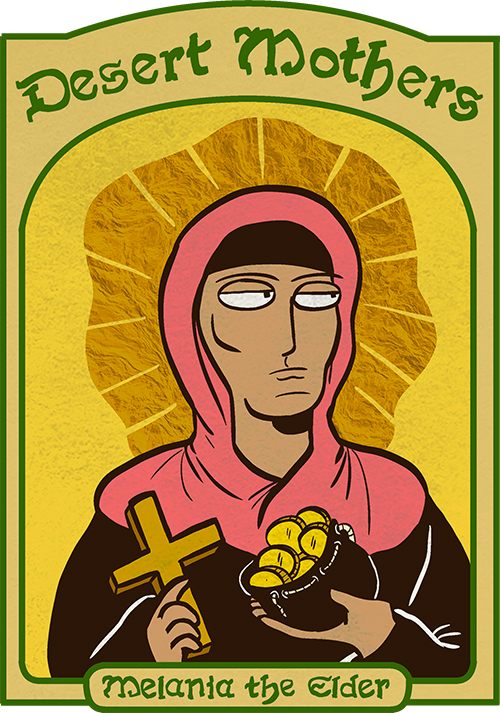
III. The Wealthiest Woman in Rome
As the church locked the roles of its followers into place—the Council of Nicaea, a first attempt at a consensus on church doctrine, was convened in 325—there were still those individuals who would not be contained. This takes us back to the well-appointed houses on the Aventine Hill, in the seat of the Roman Empire: Marcella’s loose collective of noblewomen were sending a shock through their community.
One prominent member of the group—we know her through her contemporaries Jerome and the historian Palladius—was Melania. The daughter of a former consul, married into a leading Roman family, she was among the wealthiest people in the empire. None of this, however, had protected her from that great equalizer, illness, and, when she was only 22, her husband and two of her three sons fell sick and died.
It was then that she did something very human: Melania turned to religion. She converted to Christianity and joined Marcella’s circle. It was a miserable life, a spirituality sprung from personal desperation.
But she stuck with it. And, after a few years, Melania raised the stakes. In a strange move for an aristocrat, she decided she would travel to Egypt, into the desert.
Seeking something deeper and harder than the officially sanctioned, assimilated Christian life, both men and women had begun streaming out into the desert—in Egypt, Syria, Persia, and present-day Turkey—to live as mystics. Contemporary fourth century accounts tell of tens of thousands of people who renounced the material world and went in search of a rapt, independent spirituality, supported only by their local ascetic community, or by a loose network of fellow hermits. (At this point, there were about 3,000 such communities throughout Egypt.) Some of them, out in that wasteland, became known as the “desert fathers” and “desert mothers” because they were giving birth to the Christian monastic life. Back in the cities and villages, word of these people spread, drawing others out to find them—Melania among them.

Saint Thecla monastery in Ma’loula. Thecla was a follower of Paul who was entombed in a cave, and the subject of many larger-than-life tales of her ascetic devotion. (Photo: Bernard Gagnon/WikiCommons CC BY-SA 3.0)
Quietly, before the government could force her to remarry (according to law), she appointed a guardian for her remaining son, loaded all the property she could onto a ship, and set sail, bringing many of the women and children of her household with her. Once arrived in Alexandria, she quickly liquidated her assets. She’d given up sex; she’d given up her last surviving son; and she now slowly began a decades-long process of giving away all her money.
Melania studied with the desert ascetics and followed them on their visits to the monastic communities throughout the region. Each person had their own cell in which they prayed and fasted and punished their bodies. They rarely spoke. During group prayer or silent meals, they wore hoods to make it easier for them to avoid looking at one another. Sometimes a few of the men or women would disappear to walk the day or two into the nearest town and preach in the streets, railing against materialism or inciting some heated theological debate.
But after about six months, with a Christian changing-of-the-guard in Egypt, the governor of Alexandria banished the monks and all Nicene Christians to Palestine. Melania decided to follow them into exile. Disguising herself as a slave, she snuck into their compound each night to visit these devout men and bring them whatever they might need, paid for with her own funds. The consul of Palestine learned of what Melania was doing and, unaware of her noble roots, had her arrested and imprisoned. At that moment (according to Palladius), she chose to pull rank, making absolutely clear that she was in her lowly situation by choice. “I am So-and-So’s daughter and So-and-So’s wife—but I am Christ’s slave. And do not despise the cheapness of my clothing. For I am able to exalt myself if I like, and you cannot terrify me in this way…” Whenever necessary, Melania did not hesitate to use her financial and social standing to support her religion. The consul let her do what she wanted.
When the men were finally freed, five long years later, Melania was ready for new work. She decided to head to Jerusalem, where she poured her money into building two monastic communities on the Mount of Olives: one for men (headed by her chaste collaborator, Rufinus), and one for women. She lived there—overseeing the convent, caring for pilgrims and refugees, and working with the poor—for 27 years. Her reputation was so impressive that Jerome called her a living saint.
When Melania received word that her granddaughter had decided to join the ascetic life, she returned to Rome to help her, and to attempt (against the odds) to convert other members of her extraordinarily wealthy family. On that trip home, in the intense heat, a deacon traveling with Melania washed himself with water and then laid down on the ground for a brief rest. Melania, then 60, supposedly called out to him, “How can a warm-blooded young man like you dare to pamper your flesh that way?”
Once done with Rome, Melania sold whatever land she had left, returned to Jerusalem to give away the last of her money, and died a legend at the age of 70.
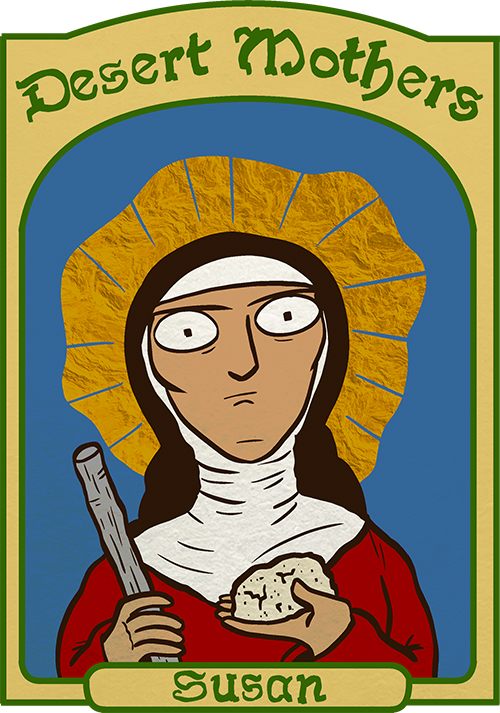
IV. Enter the Cave
Little record remains of the desert ascetics Melania studied with, and, though there may have been twice as many women in the desert as men, we know even less about the desert mothers. A small collection of their sayings was passed down orally, but almost nothing of their lives. Who were these hermits and mystics? The story of Susan—though she lived later than the others here—is a rare surviving portrait of the severe path such women took.
Sometime in the 5th century, an eight-year-old girl in Persian Arzanene asked her parents to take her to visit the holy sites in Jerusalem. She’d likely heard talk of them, as there were thousands of pilgrims who were streaming through the region each year on their way to just that place. The upper-class family could afford the trip, but her parents dismissed her, laughed it off. Their daughter hadn’t even studied Scripture, so what could it all possibly mean to her?
So she ran away from home, hooked up with a caravan of Christian pilgrims, and hitched a ride to Jerusalem. There, they stopped at each of the sites to pray—and soon the girl, riding this spiritual high, headed off on her own. She would find a desert convent and start a new life. She traveled to a place she’d heard of, a community of many women somewhere near Gaza.
The ascetic life was harsh for the girl, who renamed herself “Susan.” The sisters were not inclined to coddle her—she was often slapped and reprimanded—but she slowly earned their respect. And after about a decade of living this way, Susan had become a leader of the group. When the women were forced to convert to Chalcedonian Christianity (a newer branch of the church) under threat of torture, the remaining sisters turned to her. She decided they would do what thousands of Christians of different traditions had already done: they would go deeper into the desert, and build a new community there.

Monastery of Saint Pishoy, Scetes, Egypt, founded in the fourth century AD in the Nitrian desert and named for one of the desert fathers. (Photo: Berthold Werner /WikiCommons CC BY-SA 3.0)
Here, Susan’s story, related by the bishop John of Ephesus—a leader of an Eastern branch of the church, in what’s now Turkey—takes an even more dramatic turn. In a sequence of events typical of descriptions of the lives of saints (and even Moses and Jesus), Susan headed out into the wilderness and was confronted by Evil.
One day, having wandered far out into the dunes, praying as she walked, she discovered a cave. It was more of a large stone hole in the earth, this cave, and, as if by instinct, Susan climbed down and sat on the hard ground. Over the coming days and nights, demons supposedly appeared to her, one after the other—because just as the self-punishing and the devout are drawn to the desert, so (they say) are wicked spirits in their rawest form.
Back at the convent, the other sisters were miserable, confused—until residents of the nearest village led them to the cave. Peering down into the opening, they discovered Susan, on her belly on the dirt and gravel, groaning and praying out loud. The sisters pleaded with her to return with them. By force, they tried to remove her, tugged at her limbs, tried to lift her up and out—but she resisted. God intended for her to stay at this place, in prayer and penance.
For the next three years, the sisters would visit Susan once a week to bring her water and a few pieces of dry bread. As time went on, word spread of the woman alone in the cave, fasting and praying and battling demons. Her choice to isolate herself drew people to her—many visitors came to see her, from Alexandria and from Libyan villages. Eventually, an older holy man arrived, bringing with him ten disciples. Together with the sisters, they designed a desert monastery, with separate enclosures for the men and the women; and they convinced Susan to emerge from her desert cave, finally, to lead them. She spent her last years there, willing to talk to any who visited about the monastic life—but always from behind the wall. By the time of her death, she had not looked at the face of a man in 25 years.
People throughout Egypt passed around Susan’s teachings, the stories of her asceticism, her warnings about the apocalypse, her demand that every person ask forgiveness for the sinful nature with which they were born. Talk of her powers grew, from her ability to cure illness to her skills at battling far-away demons using only her mind. As John of Ephesus writes, “This is a woman, but she is stone, and instead of flesh she is iron!”
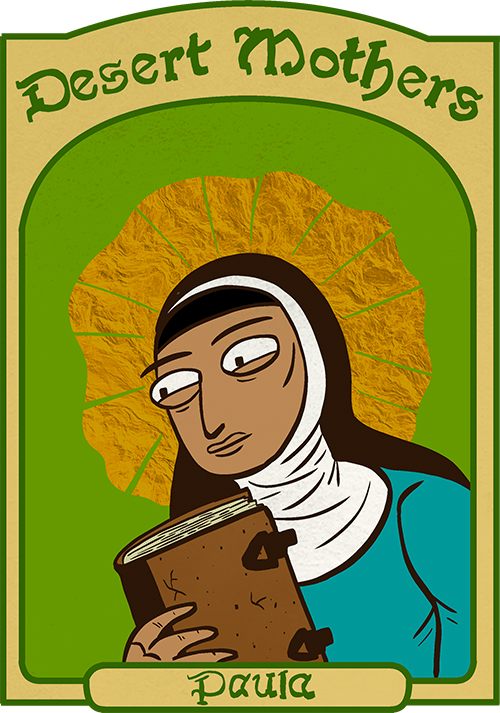
V. She Knew Herself No More as a Mother
Just as Susan left her parents and Melania abandoned her last son, Paula, the most famous of these early Christian women, completely defied conventional mores of femininity: she chose spiritual practice over family. It was a choice viewed then (and now) as even more repulsive when made by a woman.
Like Melania, Paula was a member of Marcella’s circle in Rome. Once she’d given birth to a male heir (after four daughters), she took a vow of chastity and began spending time in Marcella’s house. When her husband died shortly thereafter, she gave herself completely to religion. As a wealthy widow of 35, Paula met Jerome, and he helped her to oversee her own group of ascetic women—a group that included her children.
Within two years, however, the close relationship between the two chaste Christians became the stuff of gossip. Around the same time, Paula’s eldest daughter died—possibly from excessive fasting—and an angry crowd threw stones at Paula in the street during the funeral procession. Jerome left Rome, and Paula followed him, taking her remaining virgin daughter Eustochium and leaving her other children behind (including her infant son). Jerome would later describe that decision: “Disregarding her house, her children, her servants, her property, and in a word everything connected with the world, she was eager…alone and unaccompanied…to go to the desert.” As her children stood on the shore watching the ship leave, Paula, standing on the deck, turned her back to them. In that instant, she transformed herself from Penelope into Odysseus, from the woman always waiting to the man always leaving.
“She knew herself no more as a mother,” Jerome wrote, “that she might approve herself a handmaid of Christ. Yet her heart was rent within her, and she wrestled with her grief, as though she were being forcibly separated from parts of herself.” This painful choice, Jerome insisted, made “all admire her victory the more.” It’s unclear who Jerome’s referring to when he says that “all” admired Paula’s abandonment of her family—for the rest of her life, friends tried to lure her back to Rome, and critics accused her of losing her mind. But Melania and Susan did the same; and this was also what Jesus famously did, by refusing to pay his mother any particular respect or attention. The breaking of family ties was a symptom of a higher calling—made more shocking when done by a mother. As Jerome wrote, Paula “overc[ame] her love for her children by her greater love for God.”
Together with Jerome, Paula and Eustochium spent more than a year traveling throughout Jerusalem (where they visited Melania’s monastery) and Egypt (where they stayed with the desert fathers). Finally, they settled in Bethlehem, where Paula used her own money and credit to establish two monasteries—one for men overseen by Jerome, and another for women. The convent was a mix of women from different social classes and countries who were united by the vows they’d taken, their complete segregation from men, even eunuchs, and their renunciation of any personal possessions and all forms of vanity. Paula, fanatical in her practice, liked to say, “A clean body and a clean dress mean an unclean soul.”
But her lasting impact is as an intellectual. She managed Jerome’s scholarly work, and she suggested that he translate the Bible (then in Hebrew and Greek) into Latin. She helped him pull it off, providing all the reference materials. Having taught herself Hebrew, she edited the manuscript for him, and she and her daughter made copies by hand. This version of the Bible, known as the Vulgate, became the standard version for the Catholic Church for about the next 1,500 years.
When Paula died, at 56, bishops from several cities were present to personally carry her body into the Church of the Nativity in Bethlehem, over the cave believed to be Jesus’s birthplace. People from all around Palestine flooded the streets, and even the desert hermits and the virgins hidden away in their cells came out to pay their respects. For an entire week, they chanted the psalms.
Jerome was buried beside her 16 years later.
VI. ‘If Each of My Limbs Were Gifted With a Voice’
Marcella, Melania, Susan, and Paula—they chose to live at the very edge of society. Between them, they disobeyed their families, gave away all they owned, educated themselves, produced scholarly works, founded entire communities, and were sainted. But their own words were not considered significant enough to pass down. What could they have to say about the Gospel that their male peers hadn’t said already? How could they understand their actions well enough to tell their own stories? What we know about the virginity movement, we know through a small number of early Christian writers and bishops. What we know about Susan, we know through John of Ephesus. And we know Melania through Palladius and Jerome.
Though the life and work of Paula also comes to us through the letters of Jerome, her longtime collaborator, some later accounts of Jerome’s life—perhaps not surprisingly—would omit his close relationship with Paula to allow for a more conventional hagiography. How do you tell the story of a great man if there is a great woman at the center of it? This is only one piece of what can be lost when history is told exclusively by men.
Christianity has had, since its inception, countless stories of female ascetics and saints and martyrs in its repertoire, used to repackage its doctrines through melodrama, through lives writ large. What makes these stories different? Perhaps they’re compelling because they evoke a time so close to the church’s radical beginnings and are therefore that much more believable as stories of potential, of a church that could have been. Or maybe it’s because the biographies of Melania, Susan, and Paula became accounts of resistance—of a rejection of how the church, as an official organ of the state, had begun to limit the lives of its women. These are tales of women who walked away from their families, shed their social status, gave away their money as they saw fit, put on the clothes of men, escaped their cities, and traveled out into the desert. They traveled so deep into the desert that they struck the heart of it, the place where people go to be tested. And they faced whatever was there and survived it and were transformed.
On the occasion of Paula’s death, Jerome wrote: “If all the members of my body were to be converted into tongues, and if each of my limbs were to be gifted with a human voice, I could still do no justice to the virtues of the holy and venerable Paula.” But the voice that was missing was hers all along.
This essay is dedicated to Jo Ann Kay McNamara (1931-2009), for her groundbreaking scholarship on the historical role of women in the Catholic Church.
Update, 1/21: In an earlier version, the wrong letter from Paul was cited. We regret the error.



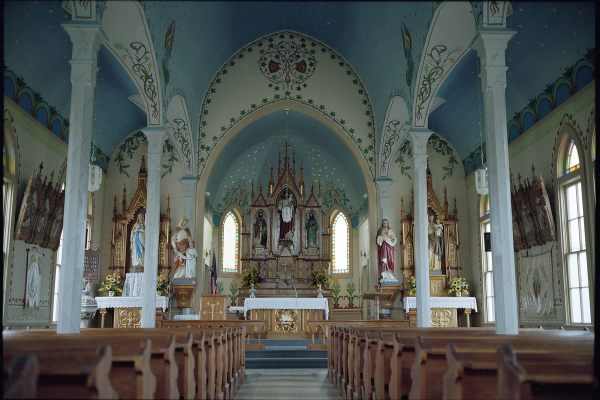

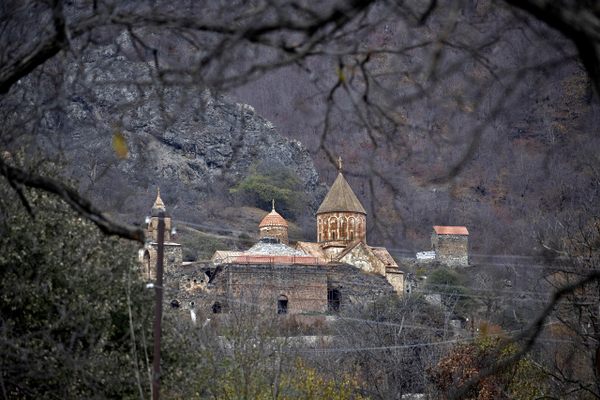











Follow us on Twitter to get the latest on the world's hidden wonders.
Like us on Facebook to get the latest on the world's hidden wonders.
Follow us on Twitter Like us on Facebook